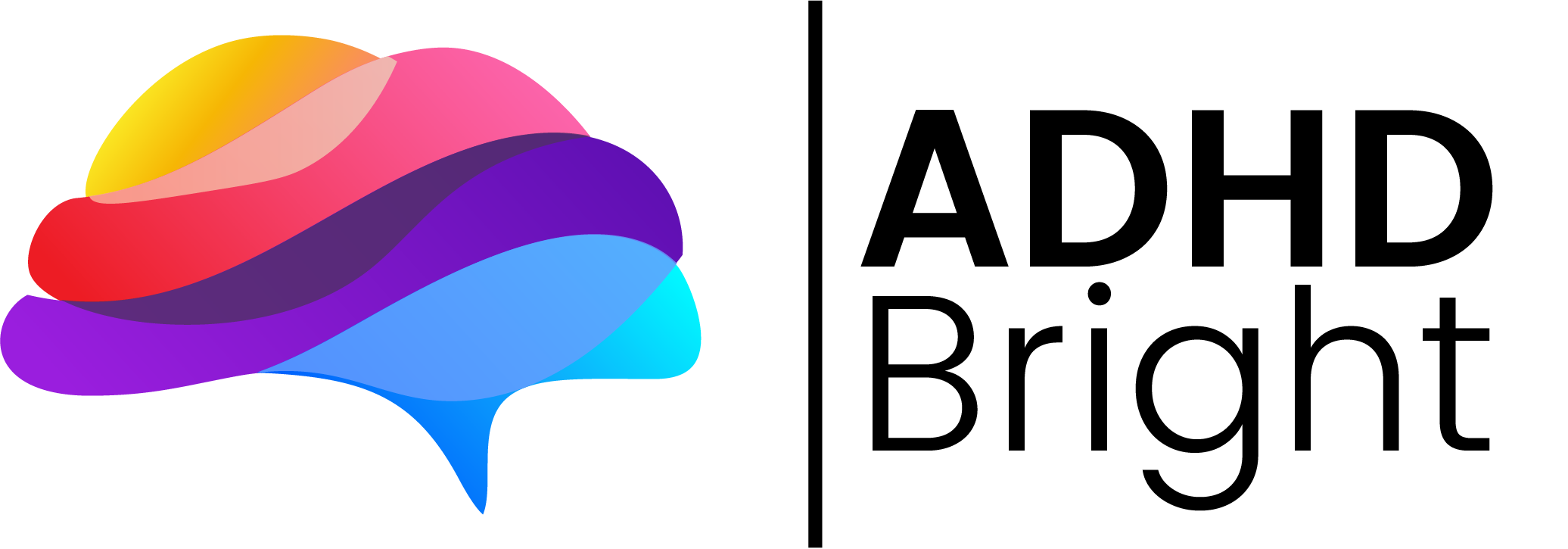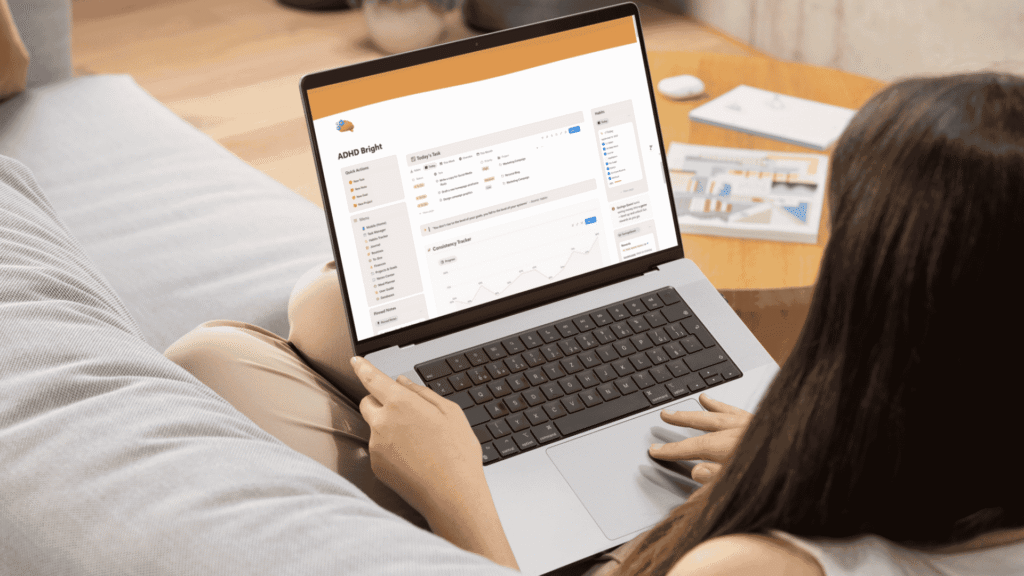ADHD brains are fascinating. They are ambitious, curious, full of energy, and sometimes unable to start the simplest task. For years, I could imagine everything I wanted to do in perfect detail, but I could not move forward. That frustration made me study the psychology of motivation, productivity, and success.
I spent years analysing what worked, what did not, and why. Over time, I built small systems to trick my brain into motion. I wanted something that worked with my mind instead of against it.
When I later learned that I had ADHD, it connected the research and the experience. The neuroscience explained what I had been doing intuitively: designing for dopamine, reducing friction, externalising memory, and making time visible.
ADHD Bright grew from that process. It is built from experience, informed by psychology, and supported by neuroscience.
Frictionless Design Backed by the Neuroscience of ADHD Planners
Complex systems drain motivation before the work even begins. The Task Manager inside ADHD Bright is designed to make the first step effortless. Every action, from adding a task to opening a weekly view, takes as little mental effort as possible.
The Focus Zone is part of that design. It turns time management into something visual and engaging. You estimate how long you want to work, start the timer, and see how close you were. This timeboxing method helps rebuild a realistic sense of time while keeping you focused through structure and small wins.
Creating Flow with the Habit Tracker and Routines Builder
Motivation does not last forever, but design can make it easier to keep moving. The Habit Tracker uses progress visuals, checkmarks, and streaks to make every small step rewarding. Each action delivers immediate feedback that releases dopamine, which helps the brain connect effort with satisfaction.
The Routines Builder supports that rhythm by giving your mornings and evenings a predictable flow. Instead of starting from chaos, you begin and end the day with a sequence that feels natural and calming. Together, they create stability without rigidity.
Offloading Memory with the Notes Center
Working memory in ADHD functions like a busy desktop. Thoughts overlap, priorities shift, and ideas disappear as quickly as they arrive. The Notes Center acts as a second brain, holding everything safely in one place so your own mind can focus on what it does best.
Capturing ideas instantly stops them from vanishing. It also lowers mental pressure because the brain no longer wastes energy trying to remember what it might forget. That relief translates into clearer thinking and better creative focus.
Dopamine-Driven Progress in the Projects and Goals Dashboard
ADHD motivation thrives on visible results. The Projects and Goals Dashboard turns ambition into motion by showing your progress in real time. Each project connects to its related tasks and displays a progress bar that fills as you move closer to your goal.
Watching that visual growth provides immediate dopamine feedback and makes large goals feel achievable. Instead of chasing distant results, you experience small, measurable wins along the way.
The neuroscience of ADHD planner design shows that immediate visual rewards help sustain focus and motivation.
Emotional Clarity through CBT-Backed Journaling
Focus is not only mental; it is emotional. The journaling space inside ADHD Bright helps you process thoughts and emotions with guided prompts drawn from cognitive behavioral therapy.
You can reflect on what worked, notice patterns in your thinking, and translate emotion into understanding. Writing activates the reflective parts of the brain that balance emotion with reason, improving both clarity and confidence.
Structure for Daily Life in the Finance Manager and Meal Planner
Executive function touches every area of life, not just work. The Finance Manager helps you track expenses, subscriptions, and savings goals without the stress of spreadsheets. It creates calm through visibility.
The Meal Planner brings the same simplicity to food. It helps you plan weekly meals, reduce decision fatigue, and maintain stable energy levels throughout the day. Nourishment becomes another form of self-regulation, supporting both focus and mood.
ADHD Bright is not about forcing productivity. It is about designing an environment where the ADHD brain can thrive. Every function — from the Task Manager to the Journaling system — works together to reduce friction, engage dopamine, and make focus feel lighter.
If you would like to explore the complete neuroscience behind each feature, read the full article here:




